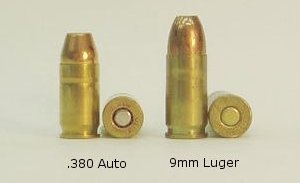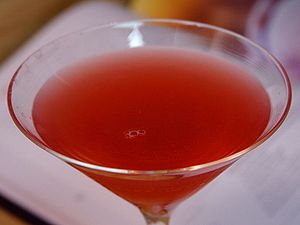___________________________________________________________________________________
There on the TV screen, I saw the rendering of my attacker. The life-like drawing stunned me. With eyes fixed on the picture, my heart staggered drunkenly around my rib cage and panic twisted my lungs. Stalker leered down at me, a big man of mixed racial background
with almond-shaped eyes and a flat nose over a wide full mouth. Two scars
disfigured the left side of his face -- one ran from his nose to the corner of
his lip, and another ran from his eye to his chin. On the right side, he
adorned himself with a tribal tattoo that showed black against his light brown
skin.
- WEAKEST LYNX
Your heroine survived the attack. She's sitting in the police station, drinking the swamp water they call coffee from a Styrofoam cup. A police artist takes your heroine down a long, echoing hallway to a quiet office. What will your heroine encounter?
The Police Artist's job is to make a rendering called a COMPOSITE SKETCH to be used to apprehend and possibly help convict the criminal.
* Ideally, the artist has a combined background in police work/criminology, art, and psychology.
* The room will probably have a comfortable chair for the witness. It will be void of face images - no art, orwanted posters or any other image that might subconsciously impede a good witness report.
* The artist will sit off to the side so the artist's own face doesn't get confused with the memory.
* The artist usually starts with open ended questions while making the initial rendering, "Tell me about the
shape of his jaw line?" Then the artist shows the sketch to the witness. At that point, specific questions are
asked. "Are his eyes the right distance apart?"
* At the end of the interview the artist signs and dates their work – in case the composite sketch ends up in
court as evidence.
* The process will last 1-2 hours
VIDEO QUICK STUDY (7:24) - An artist at work and his interview techniques
One of the first questions that the artist will ask is about race. The reason for this is not to determine the skin color but the underlying bone structures (skull shape and facial geometry). There are three main bone structure families
*Caucasoid
* Negroid
* Mongoloid
(There is also Aboriginal, which does not anthropologically fit into these three categories)
Next they will be asked about the age. The differences in bone structure shifts are most apparent in children, however, in adults the shift comes mainly in skin texture, tone, and thickness.
VIDEO QUICK STUDY (1:28) showing an age progression rendering and discussion of what factors are considered.
And then they will ask about body build.
* Does your witness have good eye sight?
* Are they dexterous at visual processing? Do they have a "memory for faces?"
* Is your witness someone who is detail oriented and paying attention?
* Memories can be distorted by stress
* Cross-racial features can be confusing
* Consider the lighting conditions
* Consider how fleeting the view
* Consider the angle of view
Examples of this software include:*Caucasoid
* Negroid
* Mongoloid
(There is also Aboriginal, which does not anthropologically fit into these three categories)
Next they will be asked about the age. The differences in bone structure shifts are most apparent in children, however, in adults the shift comes mainly in skin texture, tone, and thickness.
VIDEO QUICK STUDY (1:28) showing an age progression rendering and discussion of what factors are considered.
And then they will ask about body build.
An author will have to decide whether the witness is a good witness or not.
The artists need to have good interviewing skills including an understanding of memory and how trauma effects it (more about this in next week’s blog). The goal is a quality representation of the suspect with an emphasis on forensics. LINK to blog article about witnessing in F.A.T. Simulation* Does your witness have good eye sight?
* Are they dexterous at visual processing? Do they have a "memory for faces?"
* Is your witness someone who is detail oriented and paying attention?
* Memories can be distorted by stress
* Cross-racial features can be confusing
* Consider the lighting conditions
* Consider how fleeting the view
* Consider the angle of view
As the author, you will need to decide what techniques your artist will use
1) Interview with Hand Rendering
From my art classes I learned that:
* faces are generally not symmetrical
* the face is generally 5x the width of an eye
*The width between the eyes is generally the width of one eye
*The eyes are about half-way down the face
* the ears and nose are roughly the same height
It is the artist's job to find where the suspect's facial geometry shifts from the Greek/Classical ideal.
VIDEO QUICK STUDY (1:10) an artist using a ruler to portion properly while rendering a time lapse
drawing of a suspect.
2) Catalog
Scientists using scanners have found that we spend less time looking at the lower face. Our focus stays on the upper face. And surprisingly, (to me, anyway) less focus on the eyes than the rest of the upper face. The forehead, the hairline, and hair have priority in our memories. So if your character wants to disguise themselves, they should pay more attention to wearing hats and wigs.
People recognize things more easily than they can recall them. For this reason, science indicates that the benefit of offering photos outweighs the bias that they could produce. So artists have binders that divide the different zones of the face into options from which the witness can choose. FBI facial ID catalog. Also photo albums of tattoos, scars, hats, clothing, and glasses are helpful for witnesses to use in identification.
VIDEO QUICK STUDY 1 (2:16) Police artist discussing his use of the catalog
VIDEO QUICK STUDY 2 (2:13) Police artist discusses her use of catalog and her interview technique
3) Computer generated
The pros include:
* Faster and allow the artists to swap out one feature for another with ease.
* Less expensive to produce images this way.
* Easier to e-mail and easier to store
* Identi-kit Link to their website
* Faces Link to their website
VIDEO QUICK STUDY (4:49) Using FACES computer composite rendering
One of America's foremost police artists is Karen Taylor Link to information about Karen Taylor
VIDEO QUICK STUDY (2:48) Karen Taylor helping to solve the identity of "Brush Girl."


















